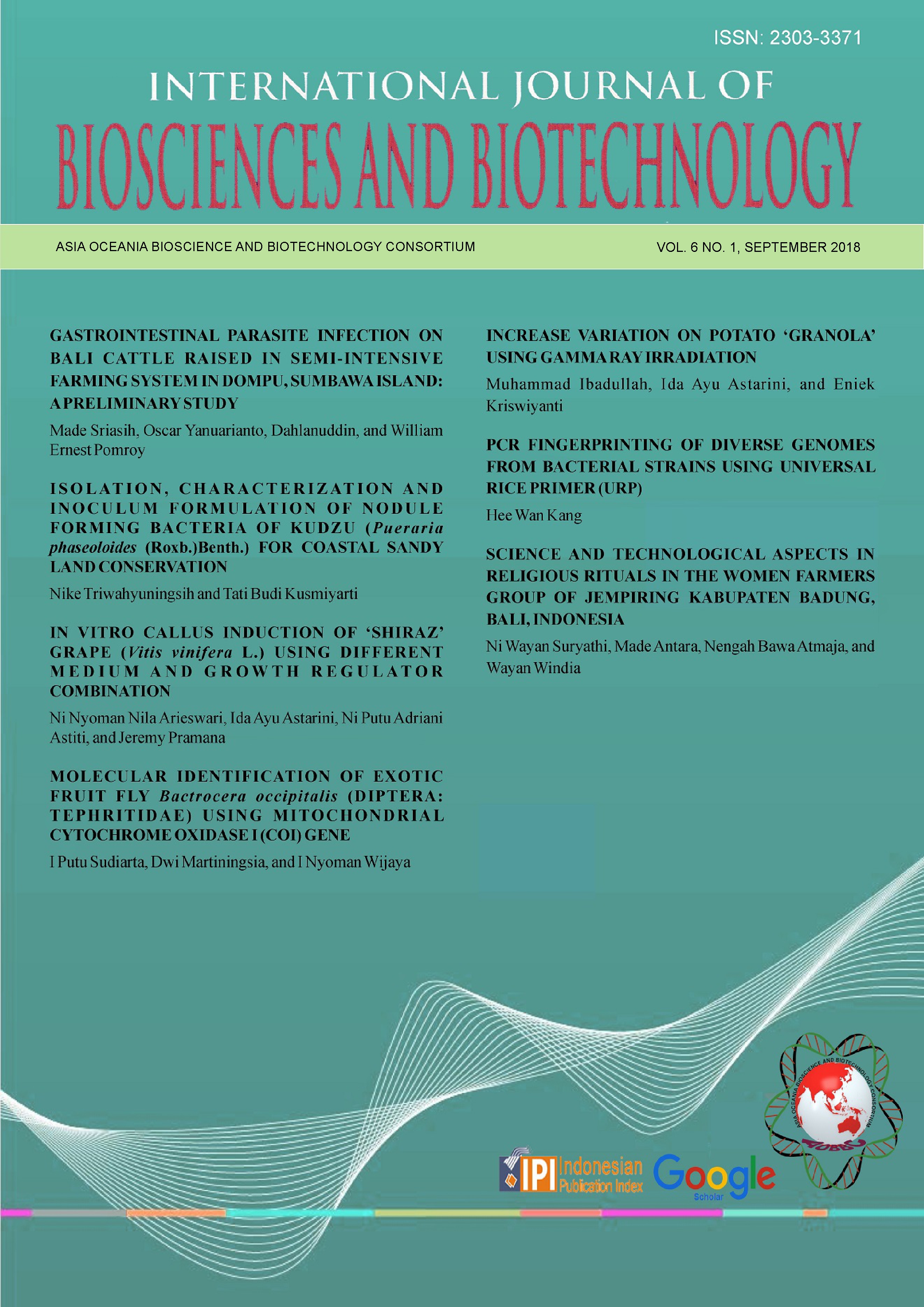ISOLATION, CHARACTERIZATION AND INOCULUM FORMULATION OF NODULE FORMING BACTERIA OF KUDZU (Pueraria phaseoloides (Roxb.)Benth.) FOR COASTAL SANDY LAND CONSERVATION
Abstract
Kudzu plantation (Pueraria phaseoloides) as legume cover crop is one of alternatives in coastal sandy land conservation. The crops are known to associate with a root nodule-forming bacteria (Rhizobium sp.) which give some benefits to nutrient cycling i.e. : atmospheric N2 fixing and play role as soil conditioner; soil Nitrogen enrichment; nutrient cycling; and increasing other nutrients availability. A research to study the isolation dan bacterial inoculum multiplication from wild kudzu root nodules, compatible isolates screening and selected isolates multiplication, and examining the form, amounts and most proper inoculum application method was conducted in Greenhouse and Laboratory of Microbiology in Yogyakarta province.
The research were held in four phases : (1) isolation, purification and characterization of isolates; (2) reinoculation dan compatibility testing of isolates to kudzu seeds; (3) inoculum multiplication; and (4) examination of the form, amounts and most proper inoculum application method. Physical and biochemical properties of the isolates were observed during the isolation phase. Infection and nodulation activity were observed during the reinoculation phase. Indirectly counting of the microbial numbers to obtain the cell numbers was conducted during the inoculum multiplication. While infection and nodulation activity and plant growth were observed during the inoculum testing phase.
Isolates purification on Yeast Mannitol Agar + congo-red media gave 5 different isolates named RP-Etp1, RP-Etp2, RP-Etp3, RP-Etp4, RP-Etp5. The RP-Etp4 isolate had the highest compatibility to the kudzu seeds (number of effective nodules >100 per plant), followed by RP-Etp5 (medium compatibility, number of effective nodules 50–100 per plant), RP-Etp1 and RP-Etp3 (low compatibility, number of effective nodules < 10). Isolate RP-Etp2 was incompatible to the kudzu.
Optimum cell numbers was reached in 48 hours incubation time. Application of broth/liquid inoculum of Rhizobium sp. has advantages over solid inoculum (in peat) as it gives the highest number of nodules, and the optimum dosage was 2 – 4 ml per plant. The highest infection-nodulation activity and plant growth were reached in 4 ml inoculum per plant (direct application) or 2 ml inoculum per plant (weekly applied in two weeks).






